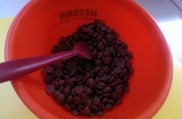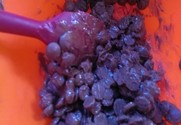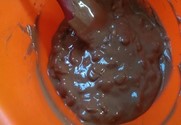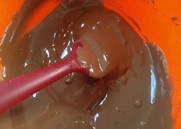We’ve all experienced that moment. You spent a fortune on some lovely chocolate, and you ruined it when you took your eye off the ball.
Or did you?
Here are some tips on what to do when you experience a chocolate disaster and how to fix them:
Burning the chocolate in the microwave!
The bad news is there is nothing you can do. If you put too little chocolate in to melt, put the heat on for too long, then you are likely to burn your chocolate and you will need to throw it away and start again.
I do have some good news though. Follow these instructions for how to work with chocolate in the microwave, and you will avoid future disasters.
If you get water in your chocolate (over the bain-marie)
This will cause the chocolate to ‘seize’ and go into a thick, grainy lump.
You will not be able to use this chocolate for tempering but you don’t have to throw it away. Rescue the chocolate by adding more water to the mixture and mixing well. You may find a hand-held mixer is a great help here to really move the chocolate around and incorporate the extra liquid.
Now you can use the chocolate as a sauce or in your baking.
There are white streaks or ‘bloom’ on the surface of your chocolate
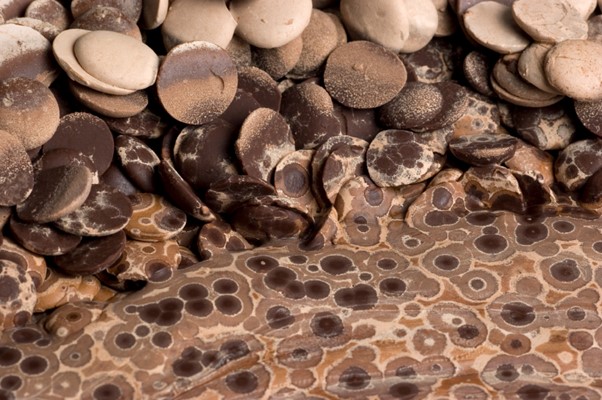
This means that the chocolate has come out of temper.
It was either not tempered properly at the outset and/or cooled at too warm (or too cool) a temperature.
The chocolate is fine to eat but obviously doesn’t look its best. You will not be able to remove the bloom, but you can cover it up by adding toppings such as cocoa powder, icing sugar, or chocolate curls.
Follow my tips for working with chocolate at home to avoid this happening again.
Your ganache has ‘split’
Ganache is simply chocolate melted into hot cream.
If the mixture has split, the cream was likely too hot when you poured it onto the chocolate.
To avoid this happening again, you need to adopt the magic minute rule!
Once your cream has come to a boil, remove it from the heat completely. Put the timer on and don’t use it at all until a minute has elapsed.
Pour onto your cream and stir like crazy. Before it goes glossy and shiny it does look as if it may have ‘seized’ but keep going, we often give up too early on the mixing stage when it’s not a fail at all!
Again, here you could try using a hand-held electric whisk for a minute or two on the mixture if you are still not seeing a nice glossy finish, and that will often do the trick.
Finally, if all that fails, you could try adding some liquid glucose (ratio approximately 30ml to each litre of ganache) to save the day.
What about all that excess chocolate?
If you have any leftover chocolate, store it in an airtight container in a cool, dark place and use it again!
If you have experienced a chocolate disaster that is not covered here, come and share your story on my Facebook page and let’s see if we can help.


